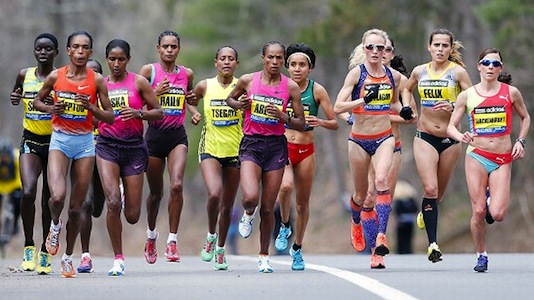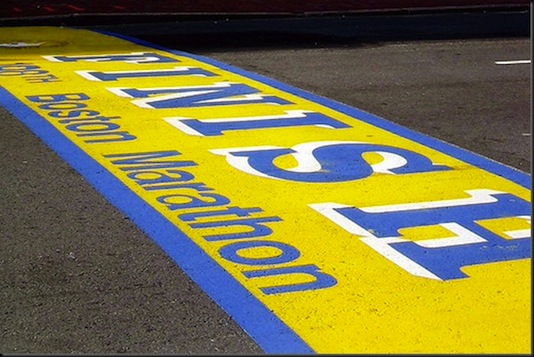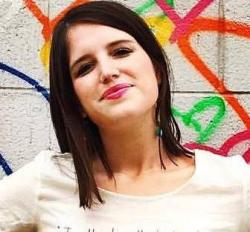Reclaiming the Finish Line: A Boston Native on the Meaning of This Year’s Marathon
April 15, 2014

AP Photo/Michael Dwyer
Today marks the first anniversary of the Boston Marathon bombing, an incident that turned one of the city’s most beloved traditions into a scene of chaos and fear. Below, writer Elizabeth Traynor, who grew up in the suburbs of Boston and whose mother narrowly avoided injury in last year’s race, reflects on the meaning of the marathon for her family and her city.
A finish line is supposed to represent an accomplishment.
Somehow, somewhere, you’ve found the power within yourself to push past your limits and stride, triumphantly, across.
On April 15, 2013, the Boston Marathon’s finish line was stripped of its power. It became a place of horror and fear. Instead of being surrounded by tears of joy and jubilant shouts, it echoed with guttural screams and moans.
For weeks afterward, this finish line was synonymous with terror—not with celebration. Its yellow expanse began to crack and fade, and despite the bouquets that stretched its length, the unshakable reality of that sunny April day remained.
But over the following year, the city of Boston worked hard to reclaim its proudest event—Marathon Monday. BOSTON STRONG t-shirts dotted the cobblestone streets. Neighbors hugged neighbors. Two sports teams headed to national championships. When the Red Sox won the World Series, they returned home and placed their gleaming trophy on the marathon finish line.

On April 21 of this year, the Boston community will once again congregate along the 26.2 miles stretching from Hopkinton to the finish line. And that yellow stretch along Boylston Street will again be a sign of triumph and accomplishment.
It will be a powerful beacon for runners—my mother among them. Last year, she was at mile 26—just .2 miles from finishing—when the blast halted the race. Alone, without her “runner’s bag” (which holds money, cell phones and other necessities), all she knew was that at the finish line, there were bombs. At the finish line, her husband and son had been waiting to see her race toward them.
She borrowed a cell phone from a stranger, texted the rest of the family that she was safe, and told my father and brother to meet her at her office. A local Starbucks gave her a free coffee to keep her warm. And eventually, after almost a half hour of winding through a city fraught with tension, she reunited with my father and brother. They smelled of smoke, with rips in their clothes and debris in their hair. They had been just feet from the blasts.
Last year, terror was waiting for my mother and countless other runners at the finish line. But this year, she’ll pound the pavement with the rest of the pack, gritting their teeth and ignoring their pain to cross that yellow stripe and claim what was denied them in 2013.

AP Photo/Stew Milne
Non-runners will help to reclaim the finish line as well. This year, my family and I will head back to that yellow stripe. We’ll firmly plant our feet on Boylston Street, holding signs and cheering along with the rest of Boston as runners speed past.
Still, there’s no escaping the 2013 marathon. At times, I think about this coming Monday with a knot in my stomach—but I trust that on April 21, the safest place to be in America will be at the Boston Marathon.
It’s a day I wouldn’t miss for the world—a day when my mother and so many others will reach a goal that was denied them a year ago. It’s a day when my father, brother and the rest of the 2013 spectators will return to the sidelines, refusing to let terror stop their celebration. It’s another step in the healing process that began as soon as the dust settled last year.
Boston is ready to reclaim its finish line.








